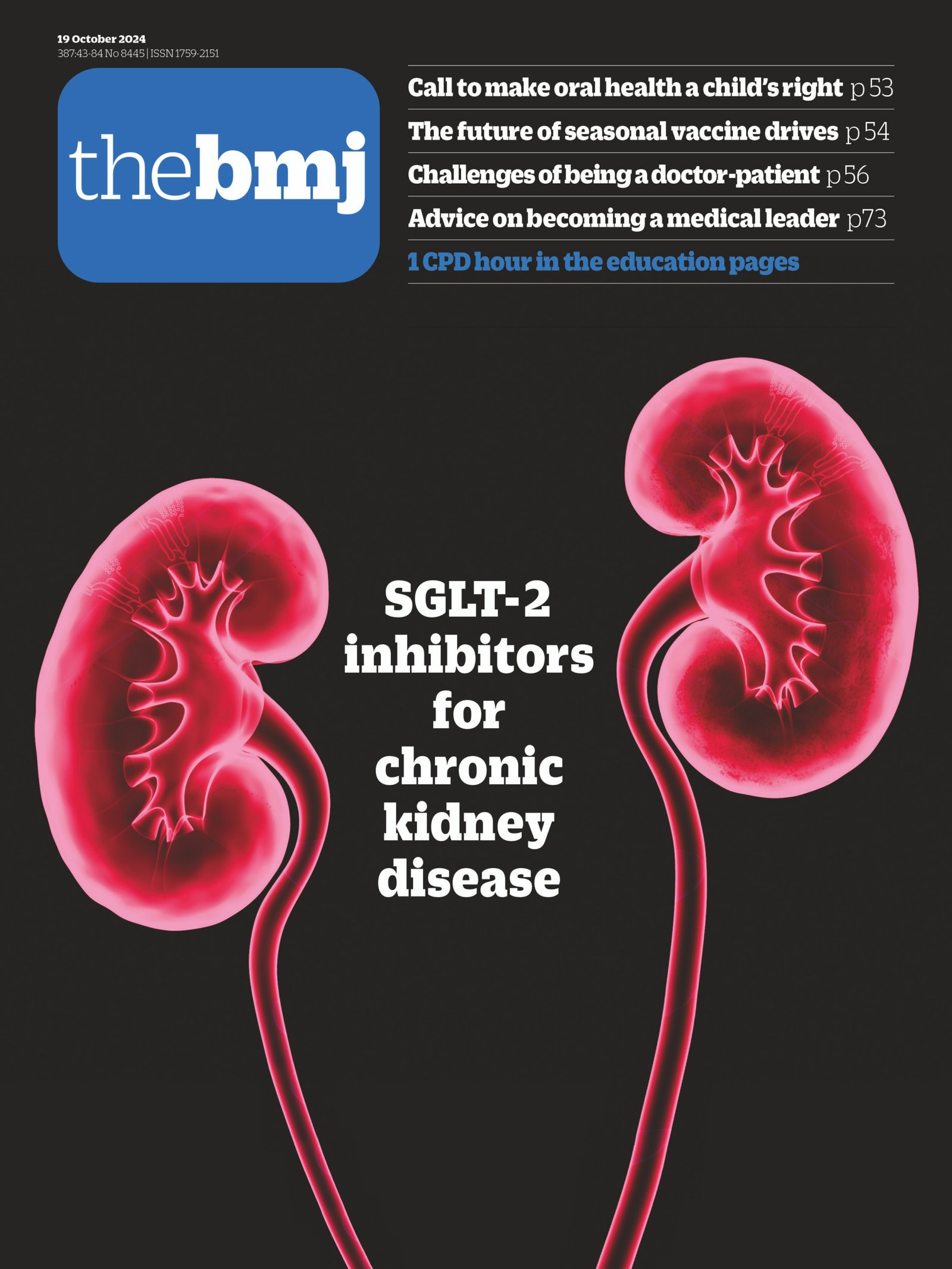- Mary McCarthy, president,
- BMA
It is widely acknowledged that a well trained and robust general practice workforce is the base of any cost effective healthcare system. Several reports have shown that having well functioning general practice reduces admissions to secondary care, reduces attendances at emergency departments, and improves the outcomes of long term diseases.123
Research has shown that every £1 spent on funding general practice, saves £3 of hospital costs.3
So why isn’t general practice in the UK funded, resourced, and appreciated as the “jewel of the NHS,” as Martin Marshall, GP and previous chair of the Royal College of General Practitioners, described it?4
GPs see 90% of patient contacts in England, with the other 10% going to the emergency department.35 Often they are the first doctors to hear a patient’s story, the first doctor to examine them, the first to decide what investigations are needed (if any), and the first to refer patients for tests. They are the first doctor to assess test results and decide if these confirm the hypothesis that they are considering. GPs have to explain to the patient what the diagnosis might be, to answer their questions, and talk to them and their family about the next steps—whether this is to start treatment or to refer to a specialist.
It is no wonder that when people talk about “going to see the doctor,” what they usually mean is that they are going to see their GP.
At present, the number of full time equivalent GPs in England has fallen.6 The number of doctors training to be GPs is still sustainable. But many of these trainees are leaving to work abroad. According to data from the General Medical Council, every year around 2500 UK doctors give up their medical licence to work abroad, often in Australia or New Zealand.7
One reason that GPs are leaving is that patient demand in general practice has increased significantly while the number of full time equivalent, fully trained, permanent GPs has declined since 2015.68
It also feels that GPs are the backstop for a lack of other social care and public health services or community support. If your house is damp, if your child is truanting, if your hospital appointment has been cancelled, if the charity run that you are planning wants you to provide a certificate of fitness, you are told to “ask your GP to sort it out.”9 GPs having to pick up work that used to be tackled in the community might explain why, at the moment in the UK, GPs are working 12-14 hour days.10
They are seeing, listening to, examining, treating and explaining medical treatments to 40-50 patients a day.10
This is not reasonable or sustainable—who would want to be the 50th patient seen by a tired doctor at the end of the day? It is one of the reasons why GPs are leaving general practice, retiring, or emigrating.
A few years ago, UEMO, the European Union of General Practitioners/Family Doctors, asked the delegates of its 25 member nations if they thought general practice was reasonable and sustainable in their country.11
About 25% of delegates were optimistic about the future and we wondered why this was so. On closer inspection, it was apparent that GPs in these countries had several things in common.
Their average list size was about 1000 patients per doctor, whereas in the UK the average practice has a list size of 2,200 – 2,500 patients per doctor.
Their average consultation time was 20-30 minutes (as opposed to 10 minutes in the UK), and their average working day was 8 hours compared with 12-14 hours in the UK. However, the factor that had the highest correlation with job satisfaction was the number of patients seen in a day by one doctor. In these “satisfied” countries, GPs were seeing fewer than 25 patients in a day, sometimes as few as 10-15 patients in a day.
This allowed them more time with individual patients, more time to sort through problems, more time to explain matters properly, and therefore led to fewer return appointments. It meant that in those countries people visited their GP twice a year, rather than the six to eight times a year that UK patients do.12
The collective action that GPs in England recently voted for, advised by the BMA General Practitioners Committee for England (GPCE) aims to emulate general practice in those more “satisfied and sustainable” countries.13
The actions proposed include a cap on the number of patients seen by one doctor in one day, and extending the length of GP appointments to 15 mins for reasons of patient safety.14
This move is to be applauded as the start of restoring general practice to its rightful position as the robust base of a well functioning healthcare system.
Wes Streeting, the Secretary of State for Health and Social Care, has admitted that the NHS is in a parlous state. This has also been highlighted by the recent Darzi report. The prime minister Keir Starmer has said that the NHS must “reform or die” to meet this challenge and has promised the “biggest reimagining of our NHS since its birth.”15
However, valuing GPs as “the jewel in the NHS’ crown” must be part of this reimaging. If the restoration of general practice is not given priority in these plans and valued for its essential role then the rest of the health system may not survive.
Footnotes
-
Competing interests: none declared.
-
Provenance and peer review: not commissioned, not external peer reviewed.

